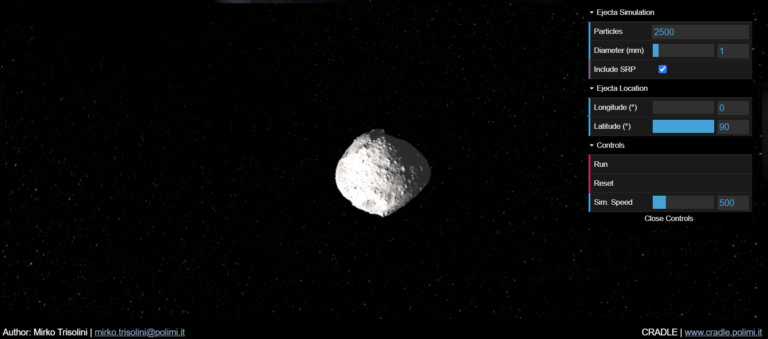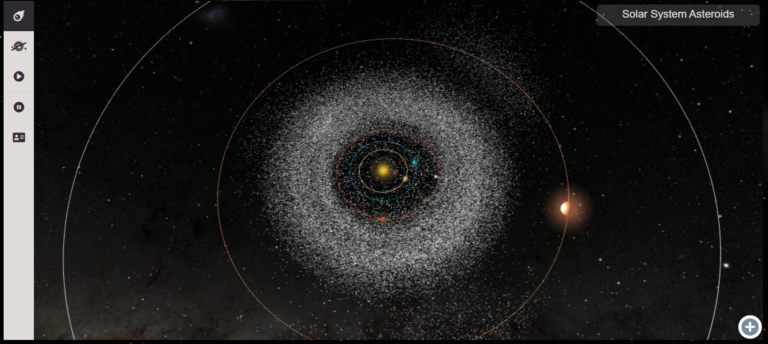OUTREACH
This page contains some of the outreach activities carried out within the CRADLE Project. Specifically, we developed two interactive tools to better understand the background and the objectives of the project. The first tool, allows the simulation of a hypervelocity impact on the surface of asteroid Ryugu, while the second tool lets you explore out Solar System and, specifically, the different asteroid families orbiting our star.
With this interactive tool, you can simulate what happens when a fast kinetic impactor hits an asteroid, similar to the one of the Hayabusa2 mission. By running the simulation, you will see how particles are ejected from the asteroid surface after the impact. You will observe their motion around the small body as their trajectory is perturbed by the gravity of the asteroid and the Sun and by the effect of the solar radiation pressure.
Select the type of particle you want to observe and the location of the impact on the surface of the asteroid, as well as the number of particles shown during the simulation, press Run, and analyse the motion of the particles.
To start playing click on the image below!
If you are interested in some more details regarding the modelling of impacts onto asteroids and small bodies in general you can check out these references:
- Holsapple, K. A., and Housen, K. R. (2012). “Momentum transfer in asteroid impacts. I. Theory and scaling.” Icarus, 221(2), 875-887.
- Housen, K. R., and Holsapple, K. A. (2011). “Ejecta from impact craters.” Icarus, 211(1), 856-875.
- Richardson, J. E., Melosh, H. J., Lisse, C. M., and Carcich, B. (2007). “A ballistics analysis of the Deep Impact ejecta plume: Determining Comet Tempel 1’s gravity, mass, and density.” Icarus, 191(2), 176-209.
- Holsapple, K. A., and Housen, K. R. (2007). “A crater and its ejecta: An interpretation of Deep Impact.” Icarus, 191(2), 586-597.

